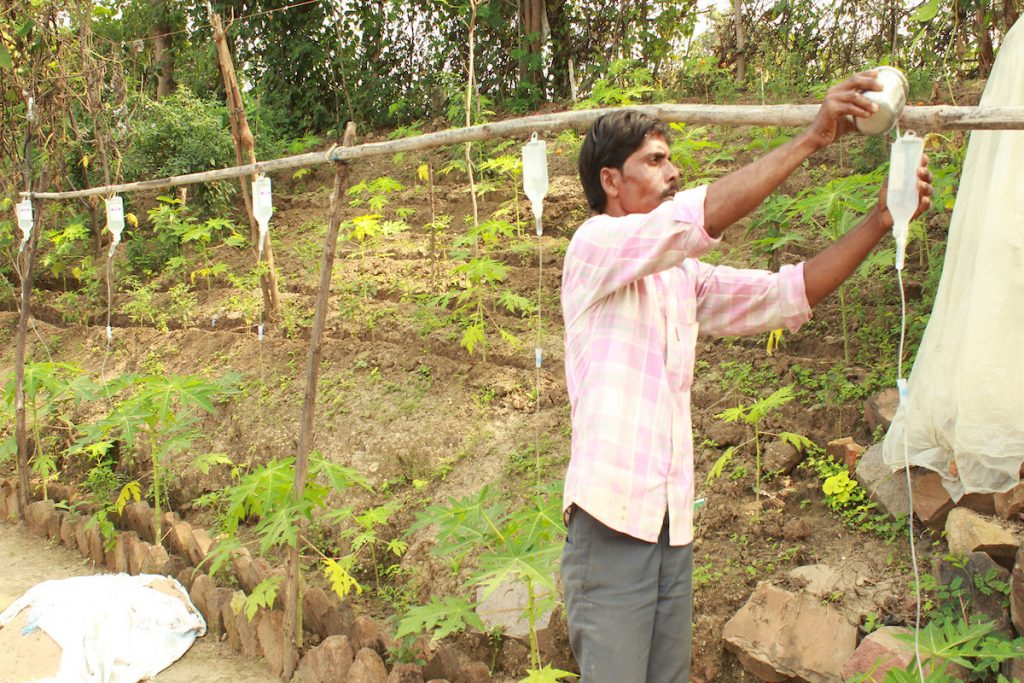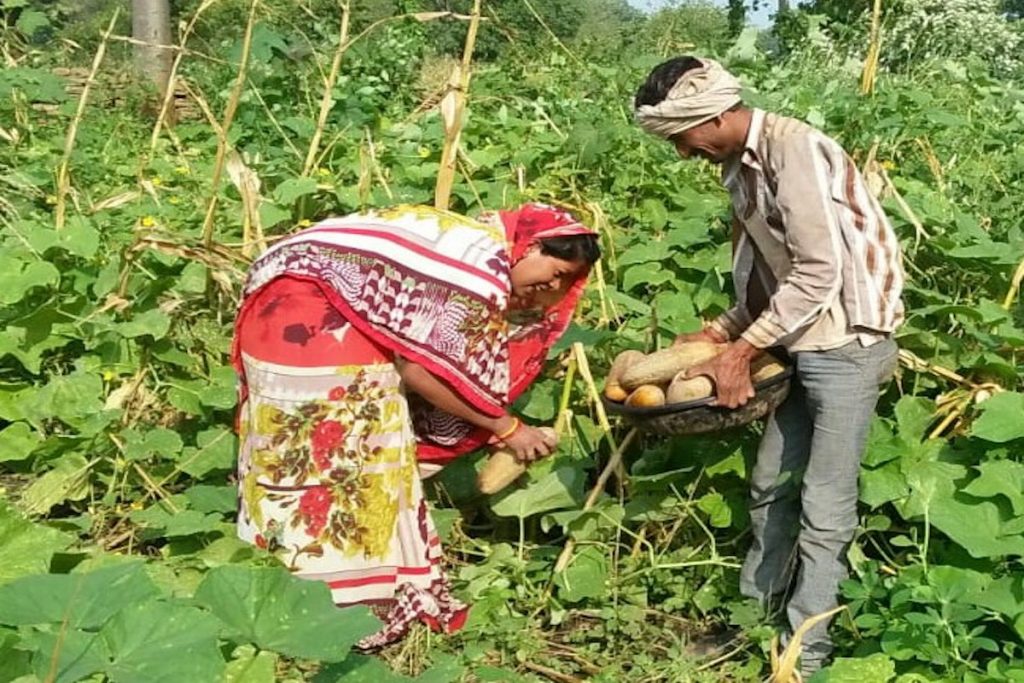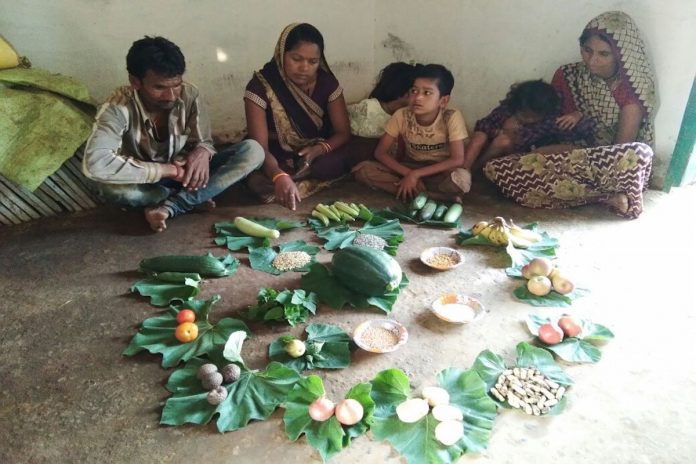Sanyasi Patel, a farmer with two acres of fertile land for maize cultivation in Uttar Pradesh, India’s most populous state, is yet to pay off the loan he took out three years ago to finance his daughter’s wedding.
The 67-year-old said he has struggled with each passing day to save enough from his dwindling earnings to finally clear his debt.
Now, with the Indian economy in the doldrums and the farming sector seriously taxed, meeting even his basic needs is becoming a herculean task.
Toiling on his farm from sunrise to sunset, Patel earns no more than three thousand rupees ($60 USD) a month — not enough to provide his family three square meals each day, let alone pay off his debts.
“I sometimes wonder what will happen if the bank takes my land, which [was put up as collateral] against the [$1500] loan to marry off my eldest daughter. There are two more in my family waiting to get married. I don’t know what future has in store for us,” Patel told LiCAS.news.
However, this crises-ridden farmer isn’t alone in his economic woes.
There are millions of people in India’s farming sector living below the poverty line and witnessing their earnings dwindle.
The latest government survey has revealed that in the country of 1.3 billion people, every fifth person lives below the poverty line, and India is far from achieving its goal of eradicating poverty by 2030.
India’s gross domestic product growth has been forecast to dip to an 11-year low of five percent this fiscal year, mainly due to a poor showing by the manufacturing and construction sectors.
For Patel, inflation and a hike in fuel prices is something that has been hitting the common man very hard.
“Even when a drought happens, the government doesn’t come to farmers’ rescue and the outcome is hard to bear. The price of seeds and fertilizer is so high that it becomes difficult for a farmer to even deal with basic costs. There is no government policy to come to the common man’s rescue,” said Patel.
The latest government data shows that food inflation has jumped to 14 percent from 10 percent in November 2019. Inflation on vegetables rose to 60.5 percent in December from 36 percent in November.
The situation is puzzling and frustrating in equal measure, said Arvind Subramanian and Josh Felman, economists from Center for International Development, Harvard University.
In a detailed research paper on India’s economy, the duo said they were confounded by the current situation, as India’s economy had, until recently, appeared to be in perfect health, growing at seven percent annually — the fastest rate of any major economy in the world.
“Nor has the economy been hit by any of the standard triggers of slowdowns, what Harish Damodaran has called the three Fs. Food harvests haven’t failed. World fuel prices haven’t risen. [Fiscal policy] has not spiraled out of control. So, what has happened — why have things suddenly gone wrong? Various answers to this question have been proposed; there seem to be as many explanations as analysts. Yet the very number of answers hints at the problem, namely that none of the explanations seems satisfying,” they wrote.
Roy Mathews, a New Delhi based economist, said the economic situation in India is currently tumultuous, mainly because of the government’s bad policies and planning.
He said the poor are bearing the brunt of the economic slowdown because there are an insufficient number of policies being implemented by the government to help the economically disadvantaged and downtrodden.

“The demonetization in which the government declared 80 percent of the country’s currency illegal in 2016 was the heaviest blow to the Indian economy. It wrecked havoc upon the country’s poor, while leaving them jobless at large,” Mathews told LiCAS.news.
Ishan Singh, who owns a dairy farm in India’s northern state of Punjab, has been struggling to sell his goods at a decent price over the past year.
He told LiCAS.news that the feed for his livestock is three times more expensive than last year, even as his earnings continue to plummet.
“There are no government fair price shops coming to the rescue. We keep relying on fate, and my earnings are dropping so much I’m considering finding new work,” said Singh.
According to the latest report from the Organization for Economic Co-operation and Development (OECD), the share of India’s farming sector in its gross domestic product dropped from 29 percent in 1990 to 17 percent in 2016.
The OECD said that productivity in India’s farming sector lags behind other Asian economies such as China, Vietnam, and Thailand, and average yields are low compared to other global producers.
The organization also said that India’s wheat and rice yields are nearly three times lower than world yields, while those for mango, banana, onion, and potato are from two to seven times lower than the highest yields achieved globally.
On top of that, two successive years of drought (2014-15) took a toll on the farming sector, with inadequate government efforts to ensure proper irrigation methods adding to farmers’ woes.

In a bid to help the marginalized and unrepresented, Caritas India, the social service arm of the Catholic Church, has been working across India to help farmers deal in these difficult times.
Anjan Beg, Caritas’ spokesman in India, said the organization’s Smallholder Adaptive Farming and Biodiversity Network aims to improve the food and nutritional security of small farmers.
The program puts an emphasis on research led by smallholder farmers themselves, helping them to adapt farming methods to increasingly erratic climate and economic conditions, said Anjan.
However, more will be needed to elevate India’s struggling farmers.
After all, nearly half of India’s population is involved in the agricultural sector, in one way or another. In many ways, their fate is India’s fate.









